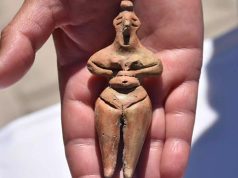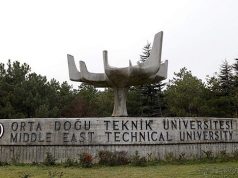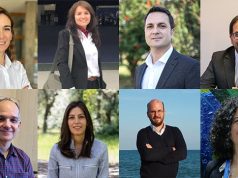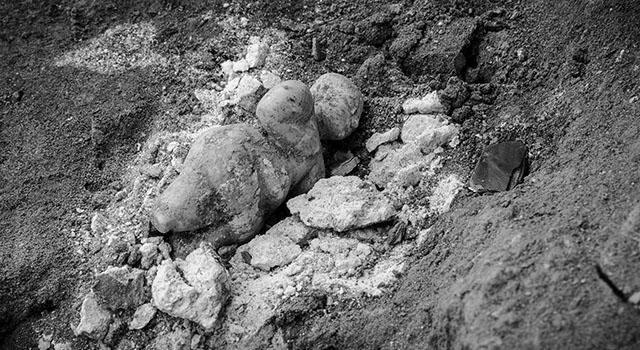
A new study on the Neolithic Anatolian settlement of Çatalhöyük uses 130 ancient genomes to show how community rules changed over centuries within the site, with households apparently becoming more communal and less focused on biological family connections, and also retaining practices that favoured females over males.
Today, most people bury their dead in cemeteries. In contrast, people of the ancient Middle East buried them inside their houses. In the famous UNESCO site of Çatalhöyük, Turkey, occupied 7000 to 9000 years ago, hundreds of skeletons from all ages and sexes have been discovered in grave pits dug under house floors. But who were these people buried together? Extended families, communal groups, or perhaps random villagers? A new study published today in Science uses ancient genomes to resolve this long-standing debate, while also delving into claims of ancient matriarchal societies.
The study, a collaboration between archaeologists and biological anthropologists in the Çatalhöyük Research Project headed by Ian Hodder and a genetics team led by the Middle East Technical University (METU) and Hacettepe University in Ankara, undertook analysis of 400 skeletons from Neolithic Çatalhöyük. “These findings provide an unprecedented record of individuals and their relatives within and between households, documenting histories of community members over many generations,” notes co-author Clark Larsen at Ohio State University.
“They have been buried for thousands of years, so many did not have any DNA left in their bones,” says co-author Eren Yüncü, a postdoctoral researcher at METU. “But we still managed to obtain authentic ancient DNA for 131, which made us very happy.”
When first discovered in the 1960s, Çatalhöyük raised excitement with its large size, vivid wall paintings and dominant female figurines. It was one of the world’s earliest full-time farming villages, and an apparently egalitarian society. Its people lived in mudbrick houses stacked together and entered from the rooftop.
A communal type of family?
When the research team measured genetic relatedness among burials in dozens of these houses, they saw something unexpected. “We found many relatives inside buildings, but things changed over time,” explains Yüncü. “In early Çatalhöyük, burials were often biological families. But in later centuries, it was genetically unrelated people who were frequently buried in the same buildings.”
“So then we asked, did these people, buried together – did they really live together?”, says co-author Elifnaz Eker, METU graduate student. “It turned out that people buried together also had similar diets. So we think they were indeed connected in their lifetime.”
People from different biological families living and eating together may be unfamiliar to many today. “Non-biological relatives being kin, and households including non-genetic kin. These aren’t exceptional in human societies,” adds archaeologist/anthropologist Camilla Mazzucato, study co-author currently based in Turin, Italy. “We know well from ethnographic studies that fostering and adoption were mainstream practices across the world in many societies.” Such practices could help consolidate community bonds, the team speculates.
Matriarchies versus patriarchies
Çatalhöyük is also renowned for its female figurines. With corpulent bodies and dominant poses, these have inspired theories about matriarchal Neolithic societies in the region. “But beyond figurines, there was no clear evidence for central female roles,” says Mazzucato, “and the claims thus remained speculative.”
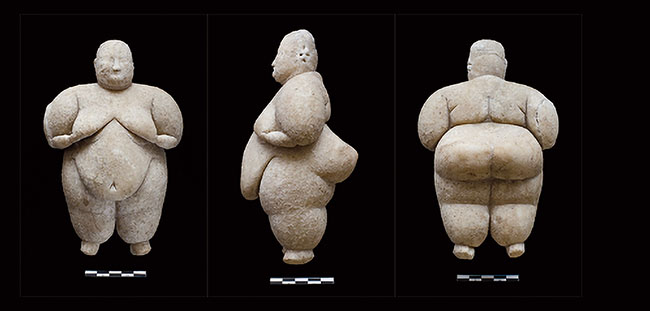
In contrast, recent years have seen many reports of male-centered practices in Neolithic and Bronze Age European communities, between 7000 and 3000 years ago. “Elite graves are mostly males. In some villages, boys were fed more meat. Now, archaeogenetics also shows that many of these societies were patrilocal. Men often stayed in the village while women moved out,” says Muhammed Sıddık Kılıç, METU MSc student and study co-author.
Maternal connections in Çatalhöyük houses
The team then tested whether Çatalhöyük was also patrilocal, to find a surprise. “There were similar numbers of females and males in our dataset,” says Kılıç. “But the genetic links within buildings ran through females. They were mainly connected through the mothers.”
“So we think that at adulthood, women tended to stay in the house, while men moved out. This is the opposite of the European picture,” adds Yüncü.
Gifts for the girls
Another twist emerged when the team studied burial grave goods associated with babies and children. “Previous work had investigated whether women or men received more burial gifts, but no clear difference was seen,” says Ayça Doğu, PhD student at METU. “But at the time, they could not study this in child graves, because you can’t tell a child’s sex from its skeletal anatomy. But sexing is a piece of cake with genetic data.”
Doğu, who became a mother of twins during the study, investigated the frequency of grave goods such as beads and bracelets, bowls and baskets, pigment, and stone blades. “We were amazed – baby girls received five times more gifts than boys. No one expected this.” The pattern was observed throughout the centuries of Çatalhöyük’s occupation.
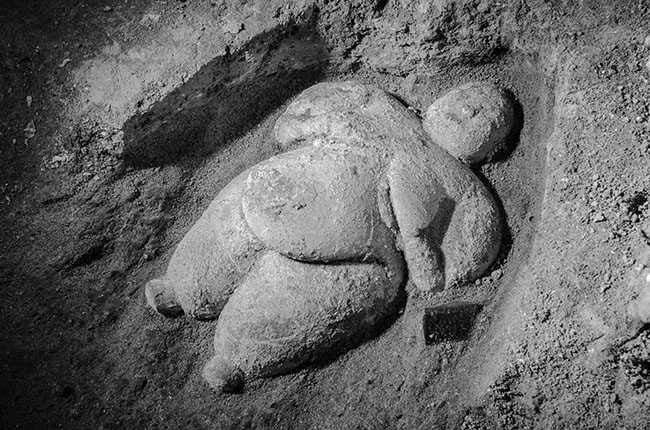
Hard work for change
The team says their results suggest that the Çatalhöyük community had many female-centered practices. The dominant-looking female figurines could also be part of this. “I’m not sure if we can label Çatalhöyük as a matriarchy just based on this,” says graduate student Merve Nur Güler, “But what we see is surely very different from the rather male-centered European Neolithic, which had originated from Anatolia.”
The work involved 47 geneticists, archaeologists, and biological anthropologists based in Turkey and 10 other countries, and has been in the making for 12 years. Co-author Damla Kaptan, who worked as a postdoctoral researcher at METU for the project, marks the significant labour that went into processing the samples. “If you don’t have a lab robot, processing 400 skeletons means a lot of manual work,” she notes. “But it was worth it. First, showing that we can do cutting-edge research in Turkey was satisfying. It was also delightful to discover how variable social relations could be back in time, sometimes in ways we hadn’t anticipated. We hope it helps to dispel the misconception that today’s societies are unchangeable.”
You can access the article here.



